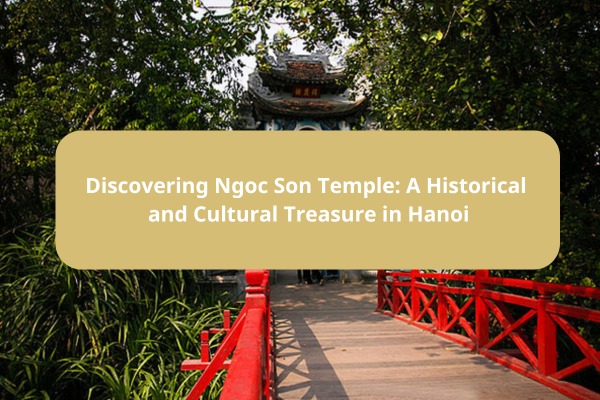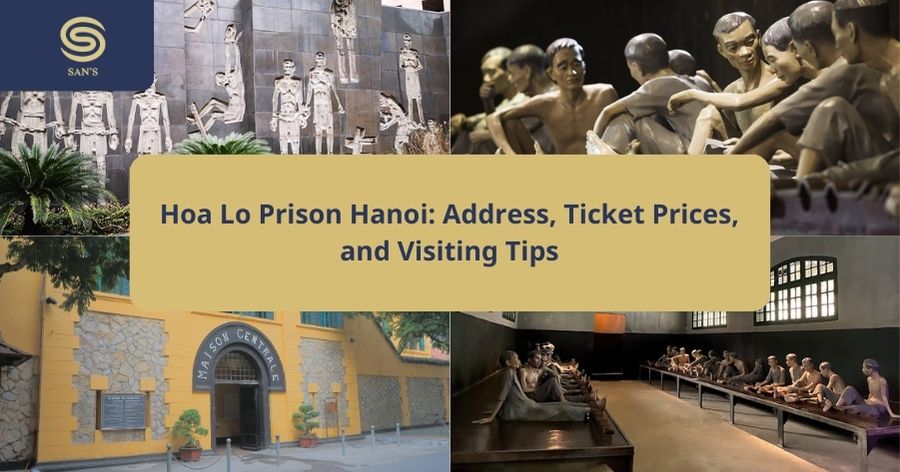Nestled on the serene Hoan Kiem Lake in the heart of Hanoi, Ngoc Son Temple stands as a testament to Vietnam’s rich cultural heritage and historical significance. This iconic temple is not just a place of worship but a symbol of the enduring spirit and artistic achievement of the Vietnamese people.
This article delves into the fascinating history, architectural splendor, and cultural importance of Ngoc Son Temple. We’ll explore its origins, key features, religious significance, practical visitor information, and tips to enhance your visit.
Historical Background of Ngoc Son Temple
Origin and Construction
Ngoc Son Temple, or the Temple of the Jade Mountain, was built in the 19th century during the Ly dynasty. It was constructed to honor the national hero Tran Hung Dao, who led the Vietnamese forces to victory against the Mongol invasions in the 13th century. The temple also venerates the scholar Van Xuong and the deity La To, the patron saint of physicians.

Key Historical Events
Throughout its history, Ngoc Son Temple has been a focal point of cultural and religious activities. It has witnessed numerous historical events, including the restoration efforts during the Nguyen dynasty, which added significant architectural features that we see today.
Cultural Significance
Ngoc Son Temple plays a vital role in Vietnamese culture, serving as a hub for spiritual activities and a symbol of national pride. The temple is associated with various legends, including the story of the magical sword returned to the Golden Turtle God, a tale deeply embedded in Vietnamese folklore.
Architectural Highlights
Main Structures
The temple complex boasts several noteworthy structures:
- Pen Tower (Thap But): This stone tower stands on a hillock, symbolizing the importance of literature and knowledge.

- The Huc Bridge: This iconic red bridge, known as the “Rising Sun Bridge,” leads visitors to the temple, offering picturesque views of Hoan Kiem Lake.

- Dai Nghien: The inkstone placed on three stone frogs symbolizes the intellectual pursuits of the Vietnamese people.

Artistic Elements
Ngoc Son Temple is adorned with intricate carvings, statues, and artwork. The main hall houses altars dedicated to the revered figures, surrounded by detailed woodwork and traditional motifs. The temple’s design incorporates elements of Taoist, Confucian, and Buddhist influences, reflecting the diverse spiritual landscape of Vietnam.
Symbolism in Architecture
The architecture of Ngoc Son Temple is rich with symbolism. The Pen Tower and The Huc Bridge represent the balance between intellectual pursuits and spiritual enlightenment. The layout and design of the temple complex are designed to harmonize with the natural surroundings of Hoan Kiem Lake, embodying the principle of feng shui.
Significance of Ngoc Son Temple
Religious Importance
Ngoc Son Temple is a revered site for worshippers who come to pay homage to Tran Hung Dao and seek blessings from the deities. The temple is a focal point for various religious festivals and ceremonies, particularly during the Lunar New Year.

Cultural Contributions
The temple has significantly influenced Vietnamese art, literature, and education. It has inspired countless works of poetry, paintings, and scholarly writings. Notable visitors, including scholars and political leaders, have contributed to its legacy and preservation.
Visiting Ngoc Son Temple
Location and Accessibility
Ngoc Son Temple is conveniently located in central Hanoi, accessible from major landmarks such as the Old Quarter. Visitors can reach the temple by walking, cycling, or taking a short taxi ride from various parts of the city.

Opening Hours and Admission Fees
The temple is open daily from 8:00 AM to 6:00 PM. Admission fees are modest, with discounts available for students and senior citizens. Seasonal changes may apply, so it’s advisable to check current timings before your visit.
Best Time to Visit
To fully appreciate the tranquility of Ngoc Son Temple, visit early in the morning or late in the afternoon to avoid the crowds. Special events and festivals, such as Tet (Lunar New Year), offer a unique cultural experience but can be quite busy.
Tips for Visitors
Dos and Don’ts
- Dos: Dress modestly, remove your shoes before entering the main hall, and maintain a respectful demeanor.
- Don’ts: Avoid loud conversations, do not touch the altars or statues, and refrain from eating or drinking inside the temple.
Photography Tips
- Best Spots for Photos: The Huc Bridge at sunrise or sunset offers stunning photographic opportunities. Capture the intricate details of the Pen Tower and the serene beauty of the temple grounds.
- Rules Regarding Photography: While photography is generally allowed, be mindful of signs indicating restricted areas and avoid using flash inside the main hall.
Nearby Attractions
- Hoan Kiem Lake: Take a leisurely stroll around the lake to enjoy its peaceful ambiance.
- Hanoi Old Quarter: Explore the bustling streets filled with shops, cafes, and historical sites.
- Thang Long Water Puppet Theatre: Experience traditional Vietnamese water puppetry, a unique cultural performance.
Ngoc Son Temple is a captivating destination that offers a deep dive into Vietnam’s history, culture, and spiritual practices. Whether you’re a history buff, an architecture enthusiast, or a spiritual seeker, the temple provides a memorable experience. Plan your visit to Ngoc Son Temple and immerse yourself in the rich cultural tapestry of Hanoi.





